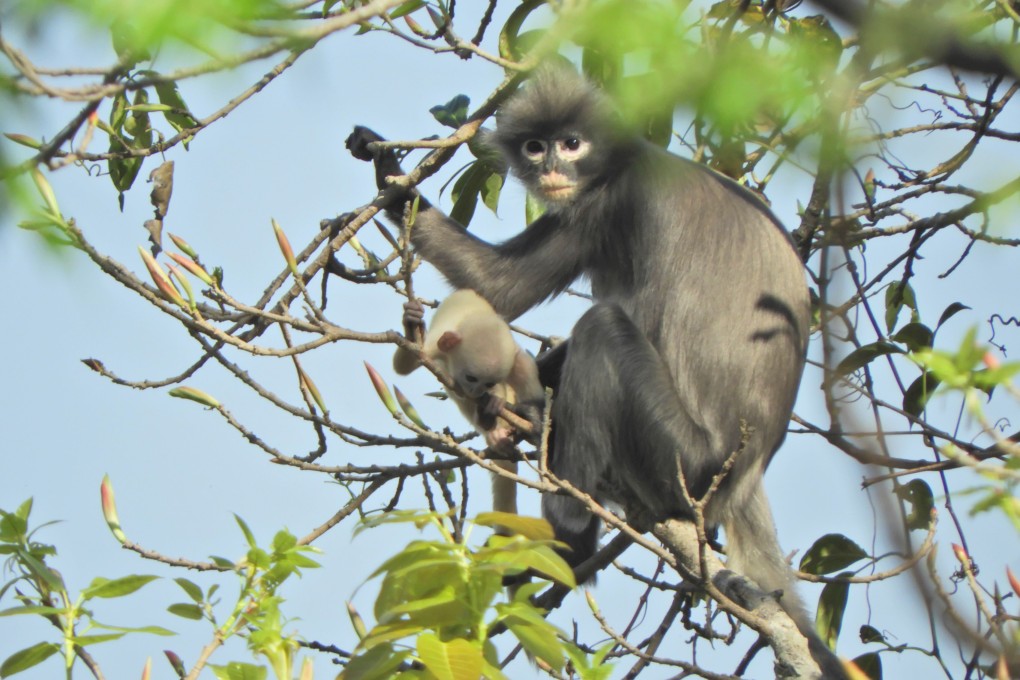Advertisement
Scientists discover new monkey species in Myanmar – and it’s already going extinct
- The Popa langur – named for an extinct volcano that is home to its largest population of 100 individuals – has been around for at least a million years
- Throughout its range, the lithe monkey with startling chalk-white rings around its eyes is threatened by hunting and habitat loss
Reading Time:2 minutes
Why you can trust SCMP

Agence France-Pressein Paris
Scientists have identified a new species of primate living in the forests of central Myanmar, a lithe tree-dweller with a mask-like face framed by a shock of unruly grey hair.
The Popa langur – named for an extinct volcano home to its largest population, some 100 individuals – has been around for at least a million years, according to a study detailing the find, published on Wednesday in Zoological Research.
But with only 200 to 250 left in the wild today, experts will recommend that the leaf-eating species be classified as “critically endangered”.
Advertisement
“Just described, the Popa langur is already facing extinction,” said senior author Frank Momberg, a researcher at Flora & Fauna International (FFI), in Yangon.
Throughout its range, the monkey with startling chalk-white rings around its eyes is threatened by hunting and habitat loss, he said in a statement.
Advertisement
Advertisement
Select Voice
Choose your listening speed
Get through articles 2x faster
1.25x
250 WPM
Slow
Average
Fast
1.25x